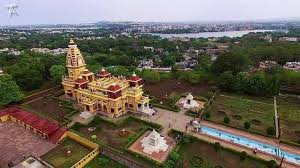In the heart of Chhattisgarh’s Mahasamund district lies Sirpur, or ancient Shripur, a name that evokes not merely the echo of time but the continuity of India’s living heritage. Once the resplendent capital of Emperor Mahashivagupta Balarjuna, Sirpur is more than an archaeological site; it is, in every measured sense, an epic of civilization written in stone and silence. Its ruins whisper the harmony of faiths, the refinement of art, and the resilience of culture that has endured unbroken through centuries.
Sirpur’s antiquity is backed by both scripture and scholarship. The Chinese pilgrim Xuanzang, travelling through India in the 7th century, recorded its grace and grandeur, a testimony to its global repute long before the world spoke of cultural diplomacy. The site reflects a magnificent coexistence of Hindu, Buddhist, and Jain traditions: twenty two Shaiva temples, five dedicated to Vishnu, three Jain monasteries, and a grand Buddhist vihara, where monks from China once found retreat. Together, they form a spiritual mosaic where the divine converses across doctrines.
The Lakshmana Temple, India’s earliest known brick temple, stands as an architectural marvel, its sculptural fluency rivaling the great monuments of the Gupta and post Gupta ages. Nearby, the Anandprabhu Kutir Vihara recalls the monastic discipline that made Sirpur a beacon of Buddhist scholarship across Asia. The Gandheshwar Temple, consecrated to Lord Shiva, embodies the continuum of worship that links god, artist, and devotee in an unbroken chain of cultural reverence.
Rediscovered in 1872 by Alexander Cunningham, Sirpur has since yielded treasures that piece together India’s syncretic spiritual past. Today, archaeologists and historians from Japan, China, and South Korea acknowledge it as one of Asia’s most resonant Buddhist heritage sites. The Archaeological Survey of India continues its conservation mission with the quiet precision of a custodian aware that each brick holds more than material memory: it holds identity. Employing digital mapping, QR coded trails, and 3D guidance systems, the ongoing effort bridges the ancient with the modern, ensuring that preservation itself becomes a dynamic act of cultural renewal.
Each year, the Sirpur Mahotsav transforms this tranquil town into a confluence of music, theater, and classical dance. Artisans from villages, scholars from universities, and artists from across the world converge here to celebrate a heritage that transcends geography. Eco trails, handicraft centres, and local cuisine projects connect the past to livelihoods, ensuring that culture and economy sustain one another in symbiosis.
Now envisioned as part of Vision 2047, the government’s plan to position Sirpur on the global heritage map integrates infrastructure and illumination without disrupting the serenity that defines the site. New roads, sustainable tourism corridors, and modern amenities are being developed alongside rigorous conservation of the temples and monasteries.
Sirpur is not just an archive of India’s pluralism; it is an argument for its endurance. Here, history speaks through sculpture, culture smiles through ritual, and spirituality breathes through silence. To walk its sacred soil is to witness the rhythm of India’s soul, tranquil, timeless, and eternally alive.




